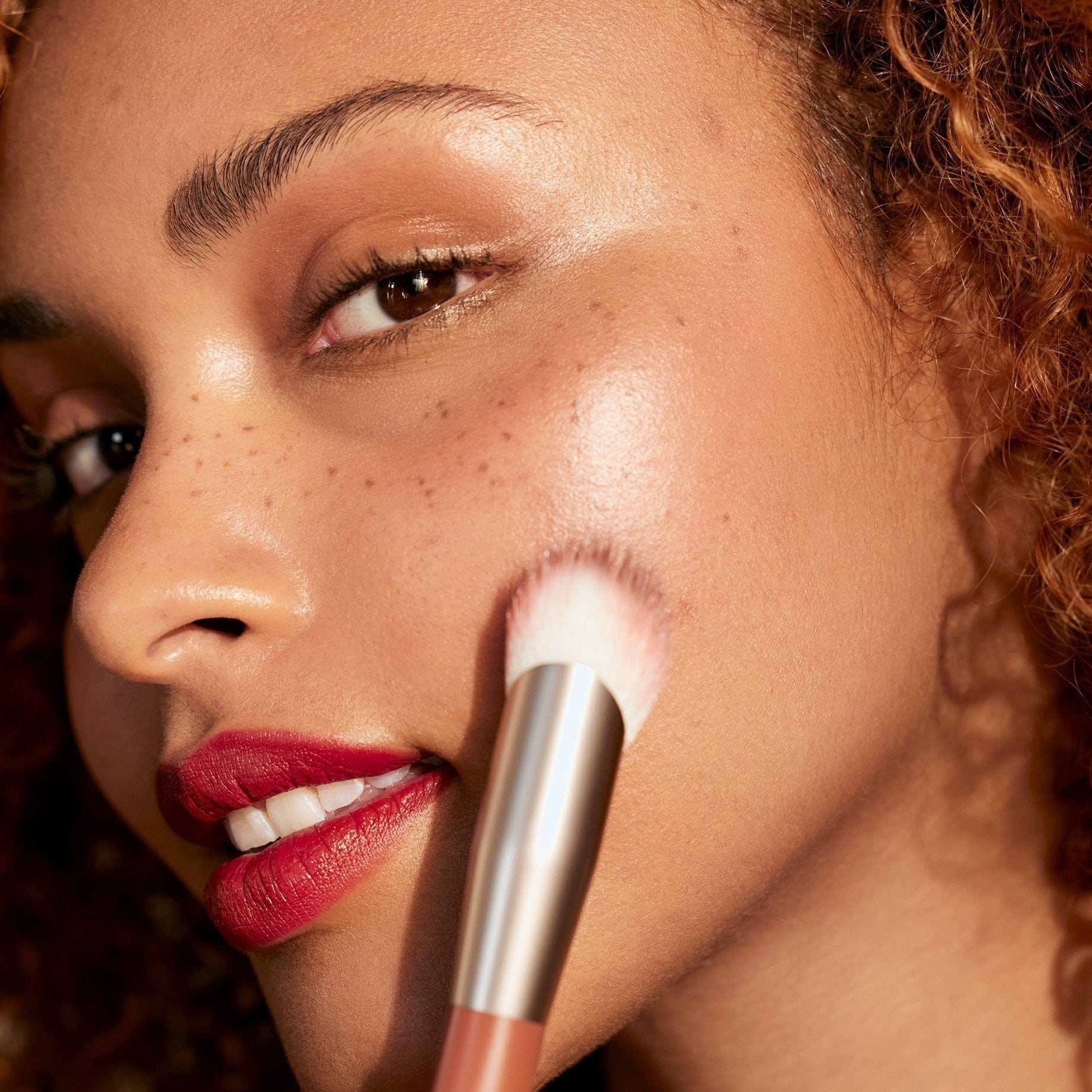
How Makeup Artists Use Blush for a Flattering Finish
Six insider tips for flawless blush application.

When it comes to achieving luminous, glowing skin, few products can compete with highlighters. For an effortless, lit-from-within glow, highlighter tops the list as one of the most essential additions to your makeup bag — especially on those days when you’re feeling dull or have missed a few hours of sleep. In one quick dab, highlighter can add extra radiance to areas of the face including the brow bone, bridge of the nose, cupid’s bow and even the décolletage. That said, there are a lot of highlighter options on the market.
Highlighter comes in countless formulas and textures like creams, powders, balms and liquids, but it’s also available in various shades such as gold, rose gold, champagne, pearl and bronze (not to mention the different levels of shimmer, sparkle and sheen). With so many options, it can be challenging to narrow down the best highlighter for your coloring. To help with this, we tapped Melissa Collazo, a makeup artist, and OMNIA brush artist, to share some tips and tricks of the trade on deciphering the best options for your skin tone and complexion.

When deciding on a highlighter, there are two main things to consider: your skin tone and undertone. To identify your skin undertone, look at the veins on your wrist in natural light. “Cool undertones will see their veins are more blue/purple,” Collazo says. “Warm undertones will see green veins and neutral will see more aqua blue-green veins.”
Once you know your skin undertone, it’ll be much easier to select a highlighter that will look best on your complexion. “Those with warmer (more yellow) undertones from fair to tan look great in highlighters in champagne and gold,” Collazo says. “Likewise, those with cooler and neutral undertones from fair to medium are best served by silvers, pearls and rose golds. “Gold, amber and bronze highlighters are beautifully suited for tan to deep skin tones to bring out a gorgeous, natural glow.”
Your skin tone is the skin’s surface color and can range from very fair to very deep. Skin undertone refers to the skin’s temperature, which typically falls into one of three main categories: warm, cool or neutral.
Here’s why this is important: “A mismatch of highlighter to a skin’s tone and undertone can be a cause for distraction and dissonance,” Collazo says.
As a rule of thumb, Collazo suggests choosing a highlighter that is a shade or two lighter than your natural skin tone to give it that light and bright effect.

“If you have dry or acne-prone skin, or larger pores, you will be better served by a highlighter that is a cream or liquid formula," she says. “Powders have a tendency to make textured skin look even more textured. By opting for a cream or liquid, you can ensure the product will melt into the skin for a more seamless application. These formulas can even be mixed into moisturizer to give a more natural, lit-from-within type of glow.”
“When going for a more natural glow, choosing a formula with a thinner, creamier texture and more subtle shimmer is advised,” Collazo says. “For those that are seeking a more Euphoria-esque shine, reaching for a highlighter with a duo-chrome effect is right on trend, bringing a megawatt sheen in opalescent shades of pink, lavender, green and aqua blue.”
For powder highlighters, Collazo recommends a fluffy fan or pointed diffuser blush to avoid over-applying product. For cream or liquid highlighters, blend them out with a damp makeup sponge.
A clear balm or facial oil on the high points of the face is one fail-proof option that looks good on every skin tone. “It is a ‘grown and sexy’ way to amplify your features without introducing shimmer, sparkle, or color,” she says.
Add items to your bag to unlock this gift.
Skincare-infused blush and lipstick for radiant color.
Value$46.00 USDAdd items to your bag to unlock this gift.
A pressed shimmer shadow that visibly smooths delicate skin while delivering multidimensional looks.
Value$12.00 USDWhite Gold Shimmer
Light gold with pearl
Add items to your bag to unlock this gift.
A pigment-rich cream shadow that visibly smooths delicate skin while delivering multidimensional looks.
Value$12.00 USDSatin Copper
Rich red copper
Add items to your bag to unlock this gift.
A barrier-protecting micellar cleansing gel-cream that dissolves makeup and pollution.
Value$26.00 USDAdd items to your bag to unlock this gift.
Creamy lipstick that plumps the lips while drenching delicate skin in moisture.
Value$28.00 USDBesotted
Beige pink
Add items to your bag to unlock this gift.
An alcohol-free daily toner that purifies, exfoliates and brightens to refresh the complexion.
Value$15.00 USD